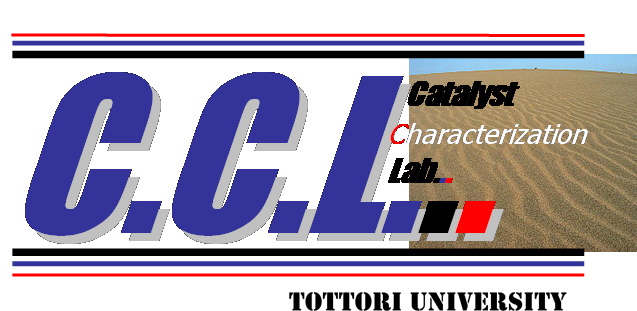Katada
Laboratory
of
Catalysis
[Top]
[Solid catalysts]
for
environment,
resources
and
energy
[Practical achievements]
Ammonia IRMS-TPD
Niwa Lab.
- 2011. 3
|
Course of Applied Chemistry
Department of Chemistry and Biotechnology Graduate School of Engineering Tottori University | [Japanese] [English] | |

| ||
|
| ||
A catalyst accelerates rate(s) of chemical reaction(s). If you see a dilute solution of H2O2, you will observe slow formation of oxygen bubbles by the reaction (decomposition) of 2H2O2 -> 2H2O + O2. If you put a particle of MnO2, the formation of bubble must become very fast. MnO2 looks unchanged, and in a fact, you will observe no change by physical and chemical analysis. Therefore, it is speculated that just a contact between the catalyst and reactant enhances the rate of chemical reaction. However, just the presence of catalyst beside the reactant does not enhance the rate of reaction. As explained here, the catalyst joins the reaction, and recovers its form after the reaction.
Catalysis is very complex and just like as designed wisely by nature. Both of organic and inorganic substances act, and atoms play their roles on a solid surface for catalysis. Catalysts join to chemical reactions. Catalysis is similar to the role of excellent teacher on the development of a child. An excellent teacher has deep relation with the activity of child. He/she must not be consumed like food, but can again contribute to next child. However, the teacher should not be the classroom, namely, vessel. He/she deeply relates with the child to greatly enhance the development to one certain direction, and this decides the future of child. Like this teacher, catalysts join the chemical reaction.